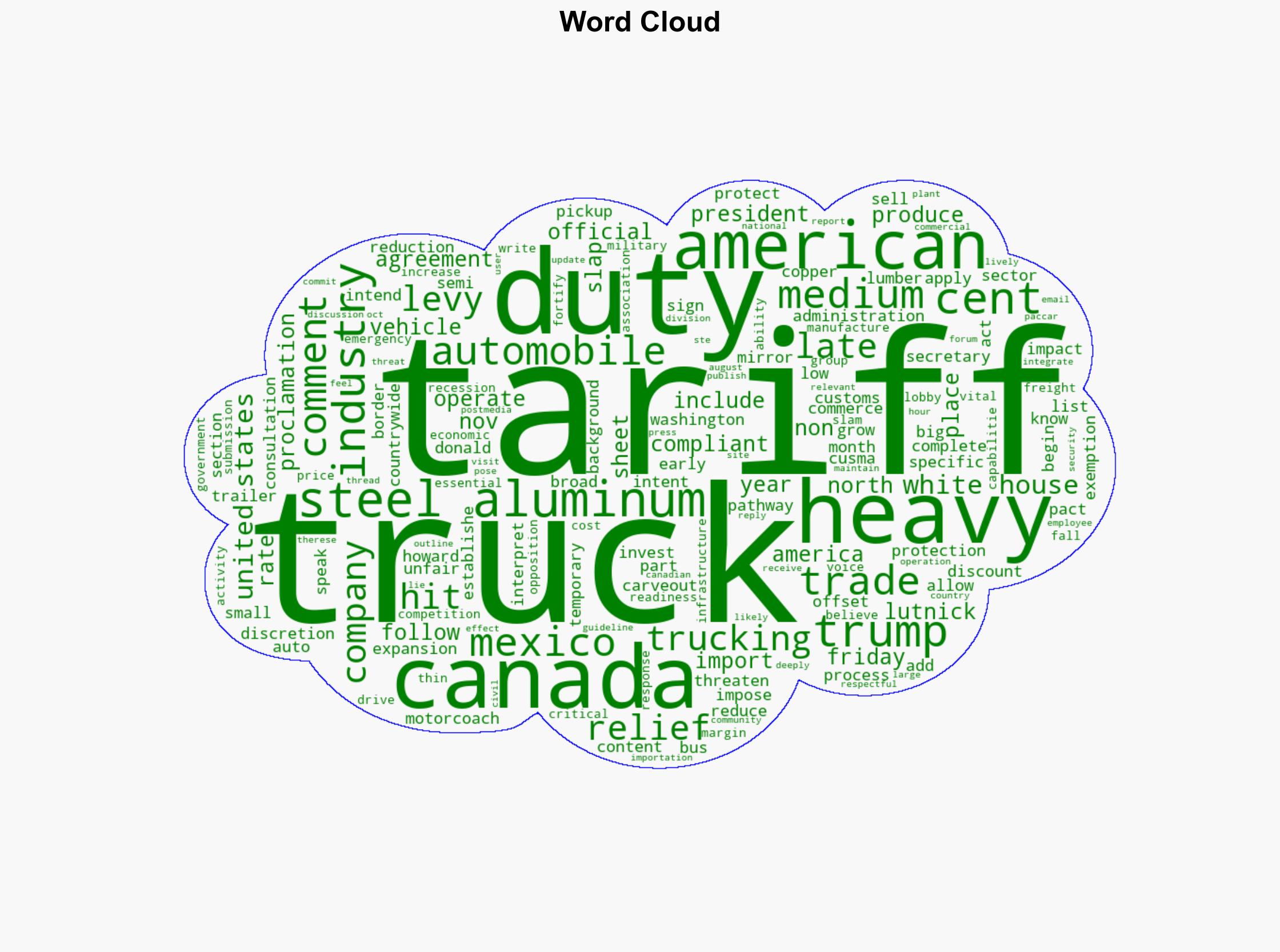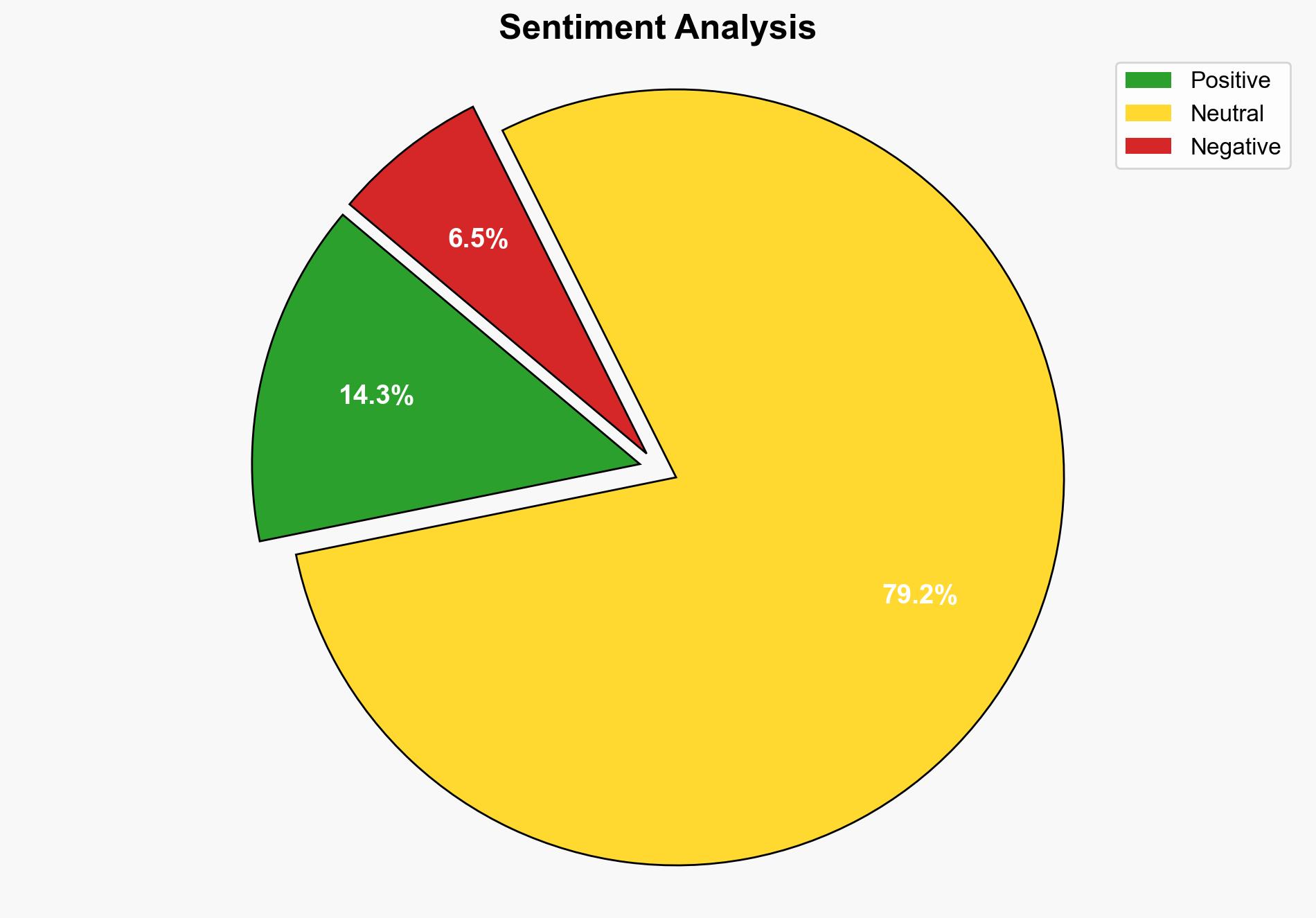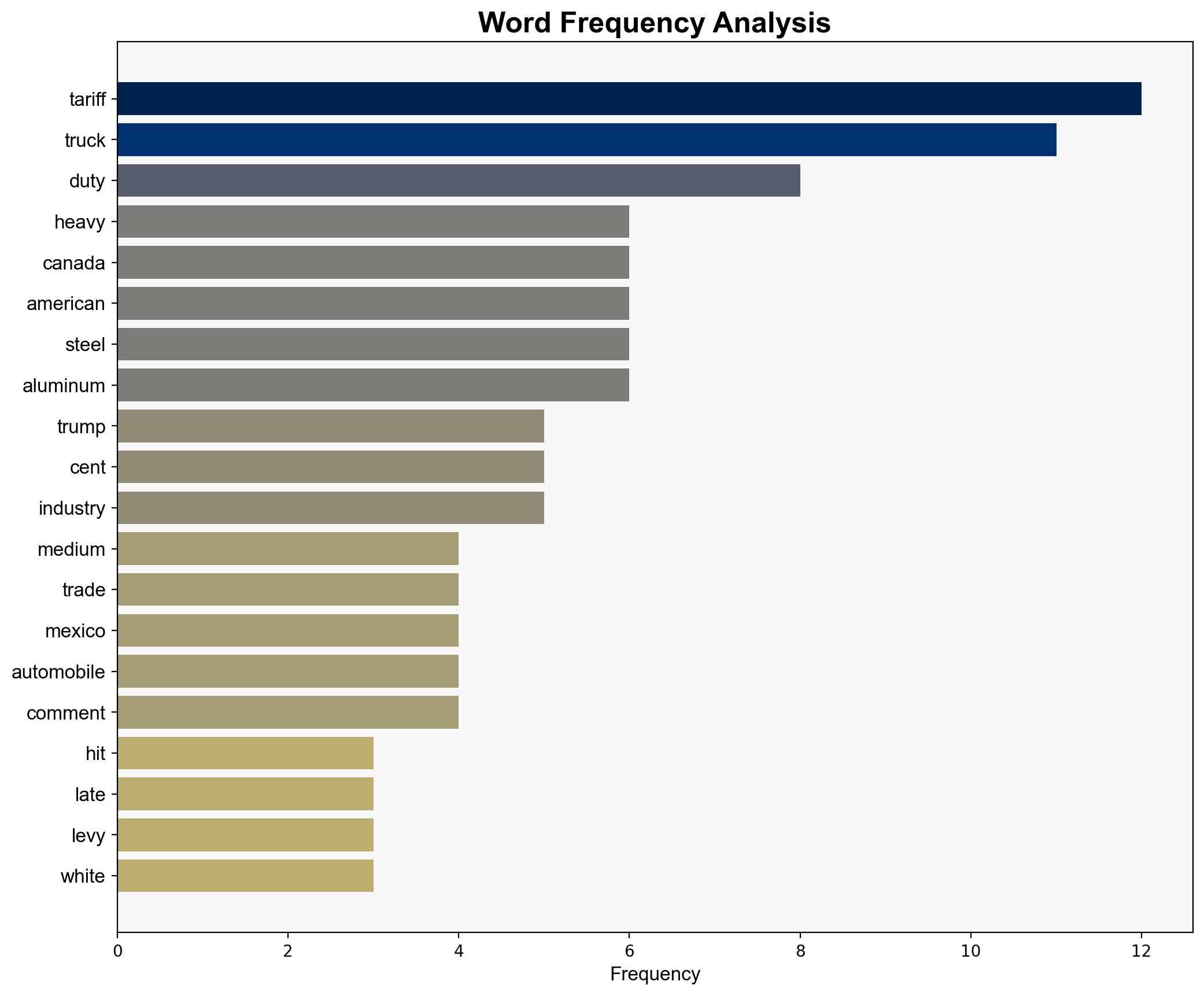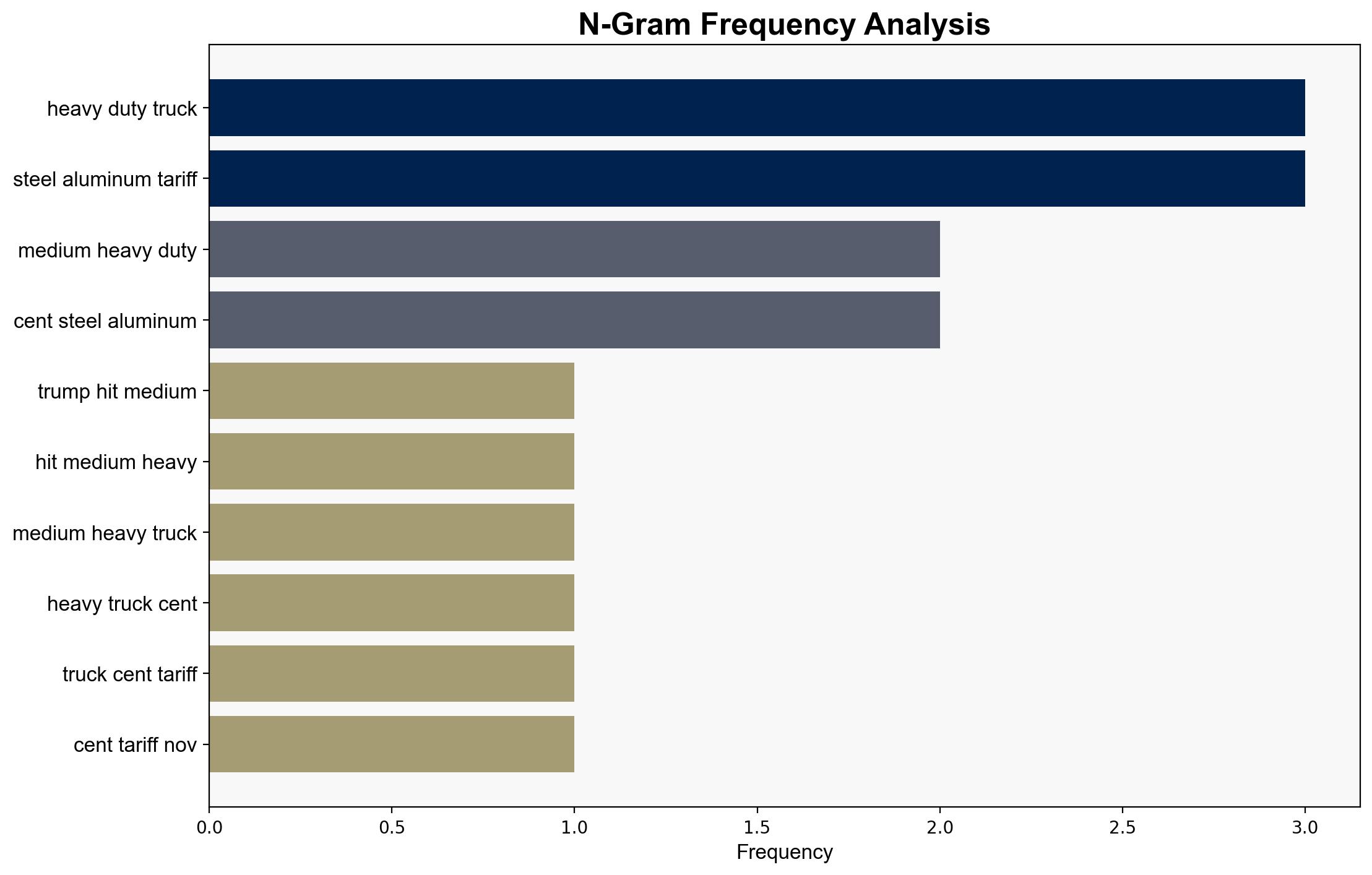Trump hitting medium and heavy trucks with 25 per cent tariff on Nov 1 – Financial Post
Published on: 2025-10-18
Intelligence Report: Trump hitting medium and heavy trucks with 25 per cent tariff on Nov 1 – Financial Post
1. BLUF (Bottom Line Up Front)
The imposition of a 25% tariff on medium and heavy trucks by the U.S. administration is likely aimed at protecting domestic industries and addressing perceived unfair trade practices. The most supported hypothesis is that this move is primarily a strategic economic maneuver to bolster U.S. manufacturing and leverage trade negotiations. Confidence level: Moderate. Recommended action: Monitor economic indicators and trade relations for shifts in policy or retaliatory measures.
2. Competing Hypotheses
1. **Economic Protectionism Hypothesis**: The tariff is intended to protect U.S. manufacturers from foreign competition, particularly from countries not compliant with the USMCA (CUSMA) agreement, thereby supporting domestic economic interests and employment.
2. **Strategic Leverage Hypothesis**: The tariff serves as a negotiation tool to pressure trading partners into more favorable terms for the U.S., potentially extending beyond the automotive sector to other industries affected by tariffs, such as steel and aluminum.
Using ACH 2.0, the Economic Protectionism Hypothesis is better supported due to the explicit mention of protecting American industry and the historical context of similar tariffs aimed at bolstering domestic production.
3. Key Assumptions and Red Flags
– Assumption: The tariff will effectively protect U.S. industries without significant negative repercussions on the economy.
– Red Flag: The potential for retaliatory tariffs from affected countries, which could escalate trade tensions.
– Blind Spot: The long-term impact on U.S. supply chains and consumer prices is not fully addressed.
4. Implications and Strategic Risks
The tariff could lead to increased costs for U.S. consumers and businesses reliant on imported trucks and parts, potentially slowing economic growth. Retaliatory measures by trade partners could exacerbate tensions and disrupt global supply chains. The move may also strain relations with Canada and Mexico, despite exemptions, affecting broader North American trade dynamics.
5. Recommendations and Outlook
- Engage in diplomatic discussions with affected countries to mitigate potential retaliatory actions.
- Monitor domestic economic indicators for signs of inflation or supply chain disruptions.
- Scenario Projections:
- Best: Tariff leads to strengthened U.S. manufacturing with minimal international backlash.
- Worst: Escalating trade war results in significant economic downturn and strained international relations.
- Most Likely: Short-term economic protection with gradual negotiations leading to revised trade agreements.
6. Key Individuals and Entities
– Donald Trump
– Howard Lutnick
– American Trucking Association
– Paccar
7. Thematic Tags
national security threats, economic protectionism, trade negotiations, U.S. manufacturing





